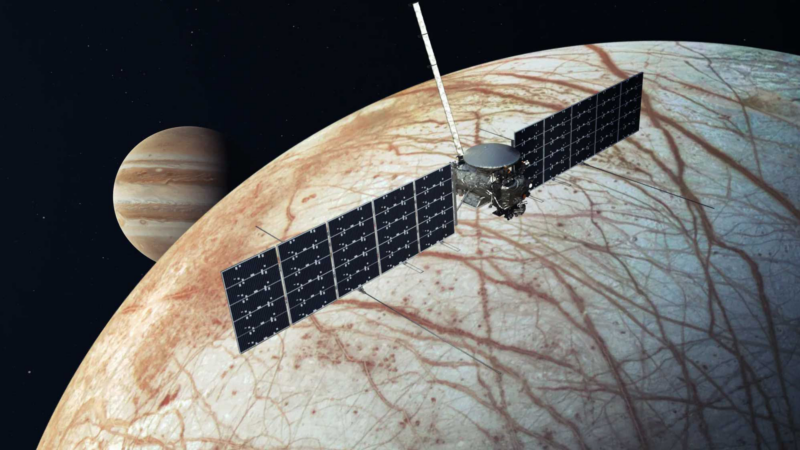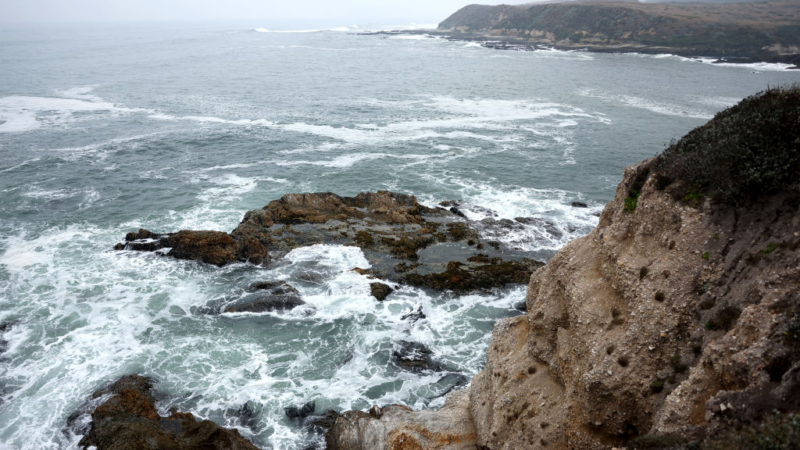A spacecraft headed to one of Jupiter’s moons is set to launch
A spacecraft that will study one of Jupiter’s moons is set to launch Monday on a journey of more than six years to discover if the moon has the ability to support life.
The solar-powered spacecraft Europa Clipper is scheduled to ascend through Earth’s atmosphere on a SpaceX Falcon Heavy rocket from NASA’s Kennedy Space Center in Florida on Monday afternoon.
It is expected to reach Jupiter in April 2030 to study Europa, the icy-surfaced moon, which is roughly the size of Earth’s moon and thought to have “ingredients for life,” such as water, NASA says.
“Europa could have all the ingredients for life as we know it,” NASA Associate Administrator Jim Free said on a media call on Sunday. “Water, organics, chemical energy and stability. What we discover at Europa will have profound implications for the study of astrobiology and how we view our place in the universe.”
The spacecraft has three goals, according to the agency, which are to “determine the thickness of the moon’s icy shell and its interactions with the ocean below, to investigate its composition, and to characterize its geology.”
Europa Clipper is carrying nine science instruments, including two that will catch dust and gas, and a gravity experiment that uses telecommunications systems, the agency says. Weighing 13,000 pounds (almost half of which is fuel), Europa Clipper has 24 engines and is about the length of a basketball court when its solar arrays are open.
The spacecraft is expected to reach Mars in February 2025 and swing back by Earth in 2026 to give Europa Clipper “enough energy to reach Jupiter” using the planets’ gravity, NASA says.
Once the spacecraft reaches Jupiter in 2030, it will orbit the planet and begin making 49 close flybys of Europa in the spring of 2031, according to NASA.
Europa Clipper will face a challenge once it reaches the planet’s moon — exposure to radiation, since the moon is within Jupiter’s magnetic field. To combat this, the spacecraft’s electronics will be enclosed in a thick vault lined with aluminum and titanium aimed as a shield against radiation.
Europa Clipper will spend less than a day in the radiation zone and then leave, repeating the process two to three weeks later, according to NASA.
The mission is scheduled to end in 2034 with Europa Clipper crash-landing on another of Jupiter’s moons, Ganymede.
The launch will be streamed live online and on NASA TV.
In Chile a language on the verge of extinction, stirs into life
Ckunsa, an indigenous language in Chile, was declared dead 70 years ago. But groups in northern Chile are successfuly reviving the language and teaching it to a new generation.
In an election race this close, Asian American voters have become a force
Asian Americans are the fastest growing-voting group in the country. That means parties are courting them in tight races in states like Pennsylvania.
Nobel Prize goes to 3 economists who study the wealth and poverty of nations
The award is shared by Daron Acemoglu and Simon Johnson of MIT and James Robinson of the University of Chicago for their research on the institutional roots of national wealth and poverty. They will split the prize money of 11 million Swedish krona or about $1.058 million.
Highlighting Indigenous voices across NPR’s network
NPR is celebrating Indigenous Peoples' Day by acknowledging Indigenous people's accomplishments and delving into their culture and the issues they face with stories from our network.
China holds large military exercises surrounding Taiwan to warn against independence
China deployed ships and warplanes in large-scale military exercises surrounding Taiwan Monday, simulating the sealing off of ports in a move that underscores the tense situation in the Taiwan Strait.
The U.S. gets a new national marine sanctuary, the first led by a tribe
Over 4,500 square miles of ocean will be protected off the California coast. It will also be managed in partnership with the indigenous groups that fought to create it.






